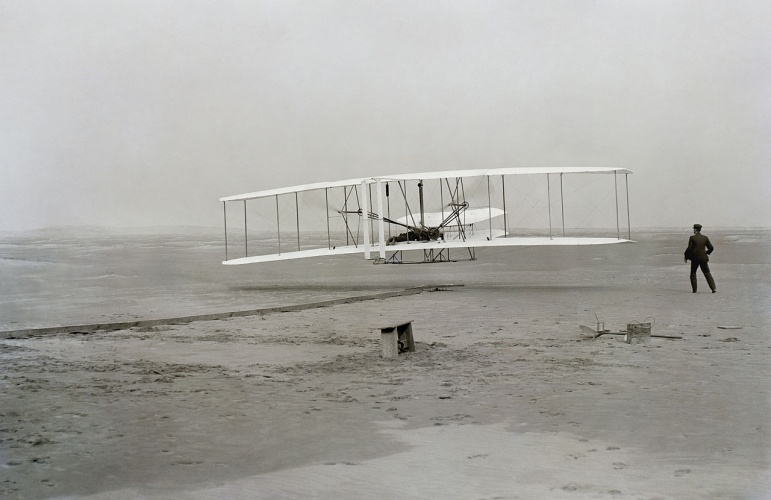The evolution of the aircraft wing
Anand Parameswaran and Ian Thompson, senior executives at Cyient’s Aerospace & Defence division, explore how aircraft wings have developed over the last century.

The aircraft wing has transformed from the wooden and fabric twin-wing set up of the Wright brothers’ Flyer, to the composite materials used in the latest models coming off the production line today from the likes of Boeing and Airbus. In fact, Orville Wright’s first flight, lasting 12 seconds, travelled 120ft - less than the wing span of a Boeing 747. The basic forces acting on an aircraft are thrust, drag, lift and weight. OEMs are today placing a major focus on trying to reduce drag and weight across all components, in an effort to improve performance and efficiency.

(Credit: John T Daniels)
While the basic aerofoil shapes laid out in the 1930s by NASA (and its predecessor NACA) have remained, the fundamental platform for generating the lift component, there have been huge advances in both the materials and manufacturing processes used.
Register now to continue reading
Thanks for visiting The Engineer. You’ve now reached your monthly limit of premium content. Register for free to unlock unlimited access to all of our premium content, as well as the latest technology news, industry opinion and special reports.
Benefits of registering
-
In-depth insights and coverage of key emerging trends
-
Unrestricted access to special reports throughout the year
-
Daily technology news delivered straight to your inbox










Water Sector Talent Exodus Could Cripple The Sector
Well let´s do a little experiment. My last (10.4.25) half-yearly water/waste water bill from Severn Trent was £98.29. How much does not-for-profit Dŵr...